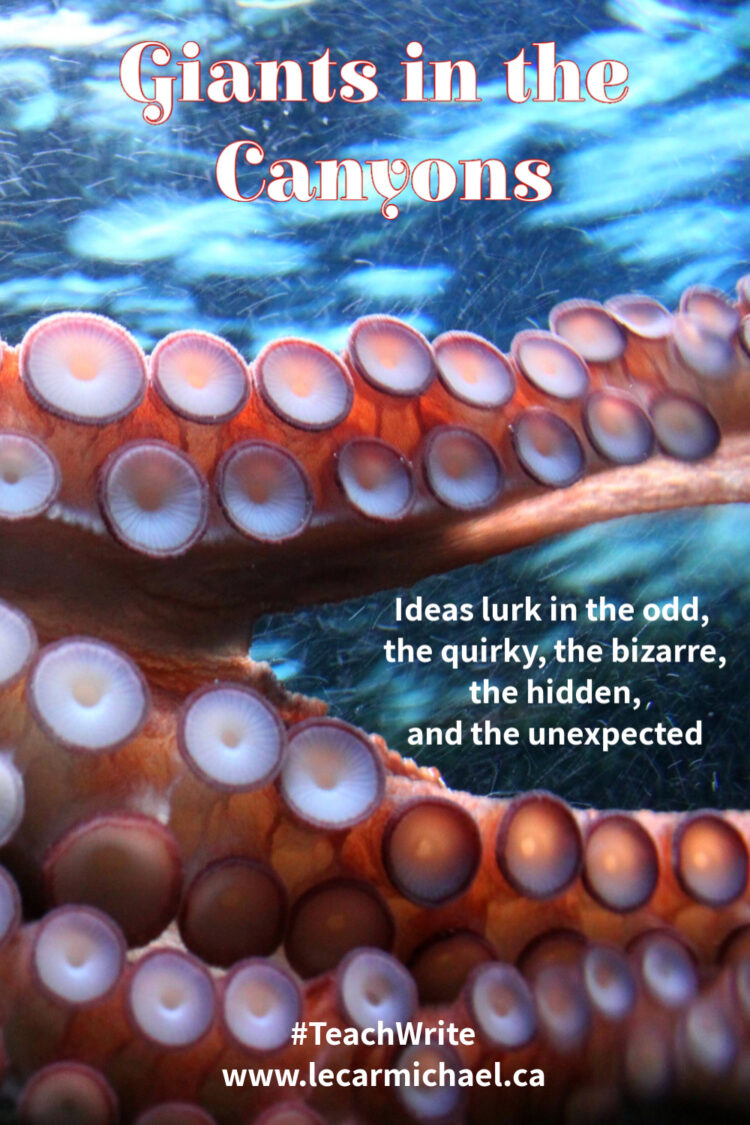 Welcome to Teach Write! This column draws on my 20 years’ experience teaching writing to kids, university students, and adult learners. It includes ideas and exercises that teachers and students can use in the classroom, and creative writers can use to level up their process.
Welcome to Teach Write! This column draws on my 20 years’ experience teaching writing to kids, university students, and adult learners. It includes ideas and exercises that teachers and students can use in the classroom, and creative writers can use to level up their process.
Last time I shared the inspirations for some of my short stories and novel manuscripts, as a first attempt to answer the question, “Where do writers get their ideas?” Most of my work, however, is nonfiction. And the good news? Getting ideas for true stories is WAY easier than getting ideas for fiction. All we have to do is learn how to pay attention.
By definition, nonfiction deals with information… and most of us are bombarded with new information each and every day. It comes from:
- things we see, hear, touch, smell, and taste
- books
- print and digital magazine articles
- the news
- social media
- conversations with friends
- conversations with strangers
- conversations we’re not actually part of but can’t help but overhear…
The human brain is really good at filtering out extraneous information. It’s a survival instinct meant to focus our attention on things essential to life (ripe cherries!) and things that might kill us (bears!). Grappling with these big picture concerns, and with more sophisticated ones (patriarchy, systemic racism, novel diseases…) generates all kinds of ideas for meaningful writing.
But for nonfiction writers, ideas also lurk in the odd, the quirky, the bizarre, the hidden, and the unexpected. To unearth those ideas, we have to train ourselves to pay attention to things our brains might not consider essential to our survival: things that are, simply put, merely interesting.
The most exciting phrase to hear in science, the one that heralds new discoveries, is not “Eureka” but “That’s funny…”
—Isaac Asimov (1920–1992)
As I’m going through my day, swimming in a sea of information, I wait for the radar ping in the back of my brain – the ping that says, “That’s funny… ” or “How odd…” or especially, “I wonder why…” The reasons underlying those strange and strangely interesting nuggets of fact, in my experience, are where the best ideas lurk – like giant squids in underwater canyons.
Once I taught myself to pay attention, I realized I’d never run out of ideas again. Figuring out whether those ideas are good – meaning interesting to my audience as well as to myself – is a different challenge, but since I write for kids, it’s an essential one. To use an example from my scientific background: no child cares about the polymerase chain reaction and how it revolutionized molecular biology. But the way scientists use it to solve crimes against animals? That idea is a winner (literally).
Hone Your Idea Radar:
The pandemic continues, so many of us will be sticking close to home this summer. Here’s an exercise in paying attention that works for both professional writers and house-bound kids: keep a field notebook. Are there plants or animals in your house, your backyard, that park where you like to walk? Observe them, and record your observations in as much detail as you can. What do you see, smell, hear, touch, taste?* What is interesting or confusing about a person, plant, or animal’s behaviour? What might explain it? Hop online or request a curb-side pickup from your library or local bookstore. Learn more, and tell the world what you learn.
*If your subjects are alive, better to avoid touching and tasting. Especially if they might be contagious!
Hey, did you know I teach writing workshops? It’s true – I work with adult writers, teachers, and students of all ages. Contact me to learn more.